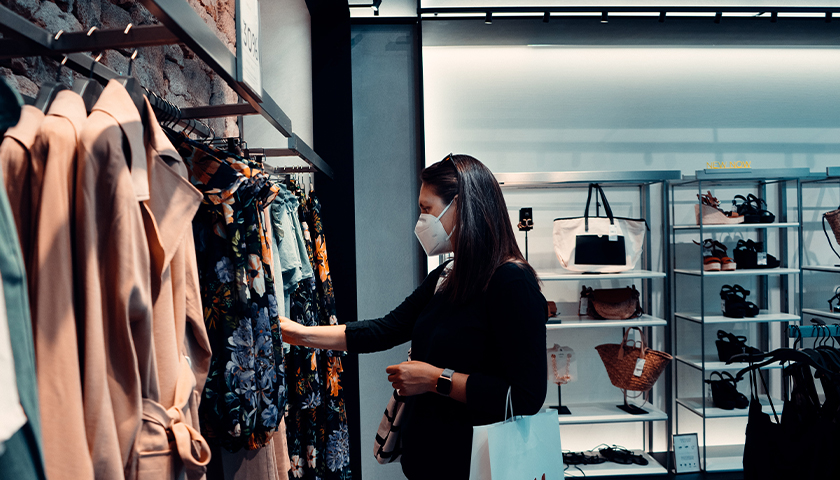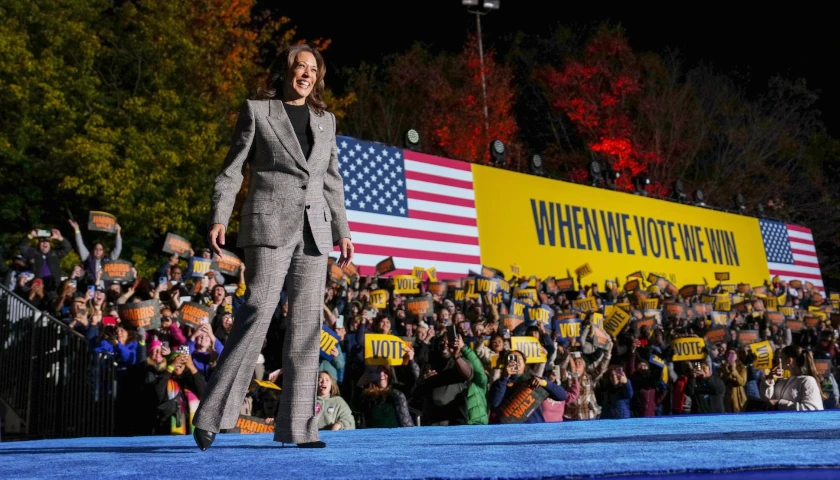by Thomas Catenacci
Massive government spending has decreased the value of the American dollar and triggered increased consumer prices, which economic experts said will only get worse.
Americans will continue to see higher prices across the board, from food and gasoline to home appliances and cars, as the federal government continues to propose more stimulus into the economy without an adequate plan to pay for it, according to several experts. Even if the government doesn’t pass legislation increasing taxes, higher prices ultimately amount to an “inflation tax,” some of the experts said.
 “Over the past few months, we have seen an inflation rate that is much higher than where we’ve become accustomed to,” Heritage Foundation research fellow Joel Griffith told the Daily Caller News Foundation. “When we are going to the grocery store, going to the gas station, building our new home, we’re noticing that prices are really accelerating at a much faster clip than what we’re used to.”
“Over the past few months, we have seen an inflation rate that is much higher than where we’ve become accustomed to,” Heritage Foundation research fellow Joel Griffith told the Daily Caller News Foundation. “When we are going to the grocery store, going to the gas station, building our new home, we’re noticing that prices are really accelerating at a much faster clip than what we’re used to.”
Since January, prices have outpaced wage growth meaning Americans’ average salary isn’t keeping up with the cost of goods and services. While wages have grown 1% since the beginning of the year, consumer prices have grown 2.1%, according to government data.
Hourly earnings have increased from $29.93 per hour to $30.17 per hour since January, according to the Bureau of Labor Statistics. Average weekly earnings have increased from $1,048.60 to $1,055.95 during the same period.
Overall, inflation increased more between May 2020 and April than it has during any other 12-month period since 2008, according to a Department of Labor report released last week.
Lumber prices have tripled, the price of certain grocery items like chicken are expected to increase 8%, companies like Procter & Gamble, Kraft Heinz and Coca-Cola announced price hikes due to increasing commodity costs and gasoline is 62% more expensive than it was in 2020.
Meanwhile, the average price of gas nationwide has surged to $3.04 per gallon as of Thursday, according to AAA. The average price in 2020 was $1.87 per gallon, meaning Americans, whose car has an average 12-gallon gas tank, are spending $14 more every time they fill up.
While the cyberattack targeting Colonial Pipeline caused gas shortages, prices have increased since the hack, according to ABC News. Prices had also been increasing prior to the attack, reaching $2.87 a month ago, AAA data showed.
In March, President Joe Biden signed the nearly $2 trillion American Rescue Plan — a coronavirus relief bill — which Democrats called a “beacon of hope for America’s families.” The White House has also unveiled trillion-dollar infrastructure and welfare plans, which lawmakers are currently negotiating.
But, the U.S. budget deficit ballooned to $660 billion in March, the third-largest monthly budget deficit ever recorded. The federal government received $268 billion in revenue while spending a whopping $927 billion.
Biden’s infrastructure plan includes various unrelated provisions on housing, in-home care, climate change, unionization and schools. His families plan — which provides universal free pre-K, free community college and implements a national paid family leave program among other provisions — is more expensive than the White House originally promised and would cause negative economic growth, the Penn Wharton Budget Model concluded.
Former National Economic Council Director and Treasury Secretary Larry Summers warned that large spending could cause once-in-a-generation inflationary pressures in a February editorial published in The Washington Post. He said this week that inflation is increasing even quicker and sooner than he originally expected.
“The vast majority of these funds allocated so far do not actually address COVID itself or vaccination or health treatment,” Griffith told the DCNF, noting that the American Rescue Plan isn’t simply a coronavirus relief bill. “It’s a big problem. Those on the left are trying to use COVID as an excuse to pass this wishlist of progressive radical socialist items.”
American consumers can expect to get “sticker shocked” in most aspects of their lives, Ethics and Public Policy Center senior fellow Henry Olsen recently told the DCNF in an interview.
Peter Schiff, the chief economist and global strategist of Euro Pacific Capital, said there will be “massive inflation,” which will negatively impact Americans’ standard of living. Like Griffith and Summers, Schiff blamed inflation on the government spending money it doesn’t have.
“The 100% cause of inflation is the government,” Schiff told the DCNF. “It’s when the government spends money that it doesn’t collect in taxes and then the Federal Reserve monetizes the resulting deficits by printing money.”
At-home food costs are expected to jump by up to 2% this year while away-from-home costs could jump 3.5%, according to the Department of Agriculture. The price of wholesale pork and chicken are projected to increase by up to 7.5% and 8% respectively.
Copper and steel have also increased in price, causing home appliances and other items to also become more expensive. Lumber reached a record cost earlier this month, driving up homebuilding costs, The Wall Street Journal reported.
The Federal Reserve Bank of New York’s influential manufacturing survey released on Tuesday showed that prices have increased at a record pace.
“Even if this is just a temporary phenomenon over a few years – let’s say you did have inflation at an elevated rate of – let’s say – 5% per year over the next three years,” Griffith told the DCNF. “That means after that three-year period, the value of the dollar that you have in your pocket now is worth about 20% less.”
“That’s why people say inflation really is a hidden tax,” he added.
Schiff said that the so-called inflation tax will wind up hurting the poor and middle class more than the rich.
“Every dollar the government spends is the equivalent of a tax, because every dollar the government spends, the money has to come from the American people,” Schiff said.
However, Fed officials have maintained that inflation isn’t a concern. Fed Chair Jerome Powell said “upward pressure” on prices during the economic recovery are expected, according to Reuters.
While inflation could tick up slightly this year to a higher-than-usual rate, it will eventually return to a normal rate, Boston Federal Reserve President Eric Rosengren said in a recent speech. The Fed’s normal annual inflation rate goal is 2%, which it considers to be an appropriate level for encouraging individuals and businesses to make sound financial decisions.
But the Fed has shown signs of potentially changing its current monetary policy, CNBC reported on Wednesday. Throughout the pandemic, the Fed has chosen to keep interest rates low, a policy which encourages economic activity, but could spur inflation.
Low interest rates incentivize people to invest and take out loans, flooding the economy with cash and increasing prices, according to Harvard Kennedy School’s Shorenstein Center.
– – –
Thomas Catenacci is a reporter at Daily Caller News Foundation.




